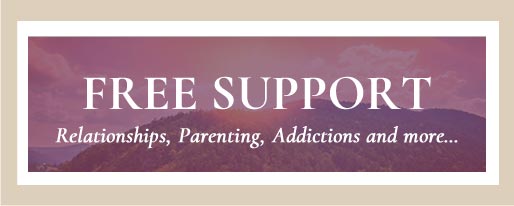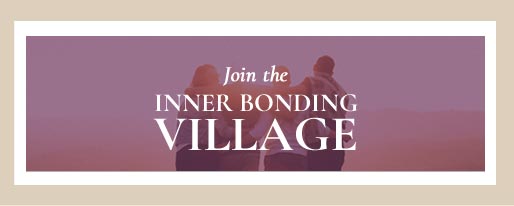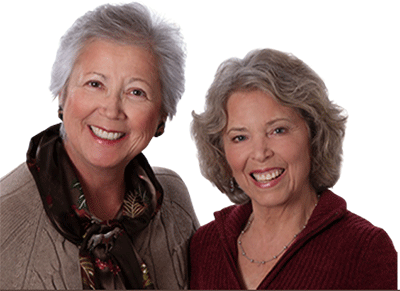Stuck in Steps 1-4, Part I: Compassion for the Condition
By Karen KralApril 10, 2014
Are you caught in the loop of steps one through four of the Inner Bonding Process? Do you have insights about yourself, followed by a big emotional release, but then feel stuck?
Stuck in Steps 1-4
Part I: Compassion for the Condition
by Karen A. Kral, M.A. LPC
Do you learn everything you can about yourself and practice deep compassion for your wounded parts, but then forget to live your life? Do you spend many hours processing, but few hours taking risks, playing, and engaging in life? If so, then you might be forgetting the importance of Step Five of the Inner Bonding process. And, your Essence, your Core Child, is probably suffering because of it.
In my own life, it has been important to acknowledge my tendency to cycle between the first four steps of Inner Bonding as a strategy to protect myself. You see, I have become very good at both “learning the truth” about myself and the world, and at “telling myself the truth”. With years of training in Inner Bonding and other systems that teach self compassion, I have done an amazing job of learning how to be kind and compassionate toward myself. Given that I used to loathe myself, the fact that I can now be gentle and kind with myself is probably the biggest accomplishment I have made in my life. And, if my life were to end right here, it is true: even what I am about to tell you (about Step 5) will not come anywhere in the ballpark of what I have learned to do by practicing steps one through four of Inner Bonding. If I die today, my Inner Child will know that I loved her, and there will never be anything more important than that.
And, yet, love, real love, includes action. What does it mean to not just love oneself, but from that place of love, to move confidently into the world, to engage with the world, and to fully participate in life? What does it mean to not only turn to the baby in the crib and say, “I love you. You are so precious and beautiful”, but to turn to the part that is afraid to venture into the scary places of the world and say, “Let’s go. I’ll be with you”?
Step 5 of the Inner Bonding process asks us to take the loving action that we learned about from guidance in Step Four. When I explore the very good reasons behind my own reluctance to take loving action, I realize that it is all about fear and control. It is one thing for me to sit at home, where I feel safe, and to tell my Inner Child and Wounded Self that I love and accept them just the way they are. It is an entirely different thing to take these parts of me out into the world and, in a sense, prove to them that I love them enough to not abandon them.
I have come to realize that my habit of cycling through steps one through four of the Inner Bonding process, has, in part, been a way for me to practice getting my courage up. I am gathering courage for facing others whose beliefs and opinions are different than my own; for facing rejection; for experiencing others’ disapproval or disappointment in me; for times when I will find that I have gotten in completely over my head; for engaging in those dreaded conversations with articulate and intellectual people who want to question my beliefs and understanding; for the times when I know that my vulnerability will leak through in a public situation and I won’t be able to hide my tears; for the times when I will forget everything I wanted to say and will feel embarrassed; and for all the rest of the times when “doing life” will look messy, raw and imperfect I am gathering the courage to face others who I do not yet know or trust and to believe the beautiful things I know about myself when I am in the mountains, in my living room, in my relationship with my husband, and with my dearest friends. I am gathering courage to believe these messages, to trust their truth, and to act on their truth, knowing that as I widen my circle of possibility, the rewards will be greater.
I am getting my courage up. It’s the same way that I tried to build up my courage on the diving board as a child. Oh how I wanted to do a flip off the board and land safely in the water. But, I was afraid I would hurt myself. I timidly ran the length of the board, but then used my arms to slow me down and stop just before the edge. I did this over and over again: running, gaining speed, then slowing, stopping and turning around. Sometimes, I would run and stop, but then do a simple dive into the water. I remember feeling disappointed and frustrated with myself when I was too afraid to take the action that pushed me beyond my comfort zone. I’d think about it as I walked along the side of the pool. I’d see all the other kids line up and take whatever risk felt right for them –whether it was to jump right into the water with no form or pattern or to do a back flip, a forward flip or even a belly flop. Then, I would line up behind all the kids again. Sometimes I would wait until the line got really long so that I could have more time to become brave. And, then I would get to the board and start my little run. “Here we go. Here we go,” I could hear myself saying in my mind. “We’re going to do it this time.” And, then, we’d get to almost to the edge and chicken out again.
Eventually, I did do a flip, and eventually, the flip didn’t hurt or come out all lopsided. But, it took many hours and days and even months of “revving up” before I was actually able to take that dauntless leap into the unknown, risking getting hurt, being embarrassed, or even hitting my head on the diving board and dying (my biggest fear). When I think back to the young girl that I was—so excited to learn to do forward-and back-flips off the diving board, and yet so afraid to take action, I have so much compassion for her. She is precious. And, she was doing the very best that she could in each moment, learning how to assuage her fears so that the brave part of her could eventually do something exhilarating, expressive and alive.
If you are like me and doing steps one through four of the Inner Bonding process have left you with a grooved and worn diving board that is strangely fresh, polished and sea foam green at the edge, I encourage you to explore your very good reasons for this. But, don’t stop there, because, you would be stopping at Step 4 again! This time, gather your courage….and leap. Take the loving action that your Core Child is longing for. It will most likely feel uncomfortable. But, with practice, you will get used to doing uncomfortable things, and you will be rewarded with a renewed sense of vitality and wonder. I’ve been trying it. And, my Inner Child is thrilled!
Stay tuned for Parts II through IV of Stuck in Steps 1-4, where I will explore ideas like: going to the Mountains to avoid the world; How saying, “I love you, but I’m too afraid” can lead to depression; the harmful effects of loving passively versus ‘being love’; and, how being stuck in steps 1-4 can become an addiction.
Karen Kral is a licensed psychotherapist who offers Inner Bonding Intensives and Workshops in the Boulder, Colorado area. Please check out www.corequestpotential.com for information on Karen’s upcoming intensives and workshops, or see the 5-Day, 3-Day and Weekend Intensives and Weekend Workshop headings on the Events page of the Inner Bonding website. Karen lives just outside of Boulder with her husband, Mark Lersch, who is also a Certified Facilitator of Inner Bonding.
 Send this article to a friend
Send this article to a friend  Print this article
Print this article  Bookmarked 1 time(s)
Bookmarked 1 time(s)Photo Gallery
| Related Articles |
|---|
| 7 Step Guide to Staying Completely Stuck in Your Life |
| Step 5: Taking the Loving Action |
| Are You Stuck in Your Life? |
Comments
| Author | Comment | Date |
|---|---|---|
| Join the Inner Bonding Community to add your comment to articles and see the comments of others... | ||

Daily Inspiration
Mandy was my finest dog. In every visit in our memories she still teaches me. Loyalty is the finest part of being.
By Dr. Erika Chopich

 Share with Del.icio.us
Share with Del.icio.us Share with Digg
Share with Digg







